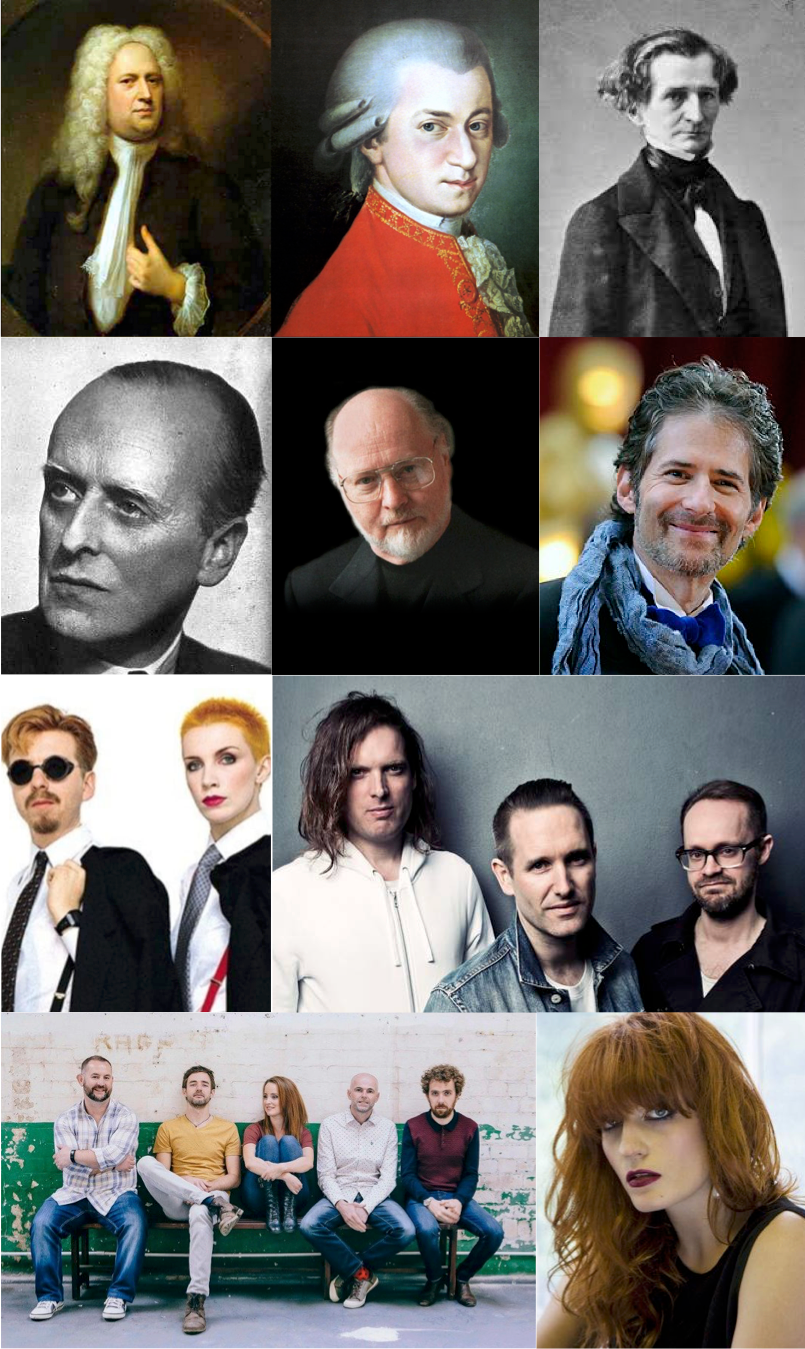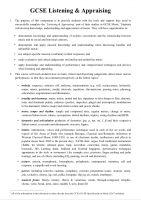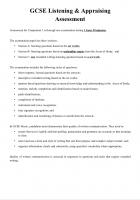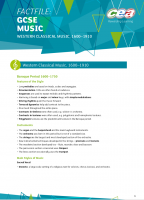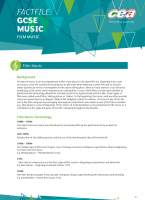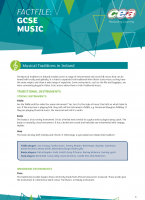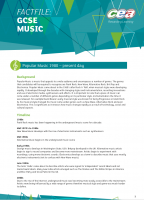GCSE Listening & Appraising (Component 3)
1. General Skills to Acquire
The purpose of this component is to provide students with the tools and support they need to successfully complete the ‘Listening & Appraising’ part of their studies in GCSE Music. Students will develop knowledge, understanding and appreciation of music. They will have opportunities to:
- demonstrate knowledge and understanding of stylistic conventions and the relationship between music and its social and historical contexts;
- demonstrate and apply musical knowledge and understanding when discussing familiar and unfamiliar music;
- use subject-specific musical vocabulary in their responses;
- make evaluative and critical judgements on familiar and unfamiliar music;
- apply knowledge and understanding of performance and compositional techniques and devices when listening and appraising.
2. Topics to Understand
This course will teach students how to make critical and discerning judgements about music and its performance, so that they can comment perceptively on the follow topics:
- melody: sequence, ostinato, riff, melisma, ornamentation (e.g. trill, acciaccatura), leitmotifs, major, minor, pentatonic, modal, intervals, repetition, chromaticism, passing notes, phrasing, articulation, augmentation and diminution;
- tonality and harmony: major, minor, modal and key signatures to four sharps or flats, diatonic, tonic and dominant pedals, cadences (perfect, imperfect, plagal and interrupted), modulations to the dominant, relative major and relative minor and power chords;
- metre, tempo and rhythm: simple and compound time, regular metres, change in metre, common Italian terms, rubato, syncopation, dotted rhythms, triplets, swing rhythms and BPM;
- dynamics and articulation: gradation of dynamics (pp, p, mp, mf, f,ffand their respective Italian terms), crescendo and diminuendo, staccato, legato;
- timbre: instruments, voices and performance techniques used in each of the set works and typical of the Areas of Study (for example Baroque, Classical and Romantic orchestras in Western Classical Music 1600–1910, or use of electronic media, synthesizers and effects in popular music from 1980 to the present day), SATB choir, organ, Irish traditional instruments (fiddle, tin whistle, uilleann pipes, harp, accordion, concertina, banjo, guitar, mandolin, bouzouki, fife, Lambeg drum, bodhrán and Scottish bagpipes), performance techniques appropriate to the style or instrument (for example arco, pizzicato, finger picking and palm muting), and use of effects (including EQ, panning, reverb and distortion);
- texture: unison, monophonic, homophonic, polyphonic, contrapuntal, imitation, call and response, a cappella and vocal layering;
- genres: including concerto, cadenza, symphony, overture, programme music, oratorio, opera, aria, recitative, chorus, jig, reel, polka, hornpipe, slip jig, air, march, strathspey;
- musical forms: binary, ternary, theme & variations, rondo, through-composed, strophic, chorus, verse, break, intro, outro, middle 8, solo, drum fill.
3. Set Works to Study
Students will be taught how to analyse familiar and unfamiliar music by a range of composers, both male and female, within the four compulsory Areas of Study. Using eleven set works as case studies, students will learn how to comment perceptively on various musical features of any piece of music, including melody, harmony, tonality, form & structure, timbre, texture, tempo, metre, rhythm, dynamics and articulation. The four compulsory areas of study are contained in the following documents:

